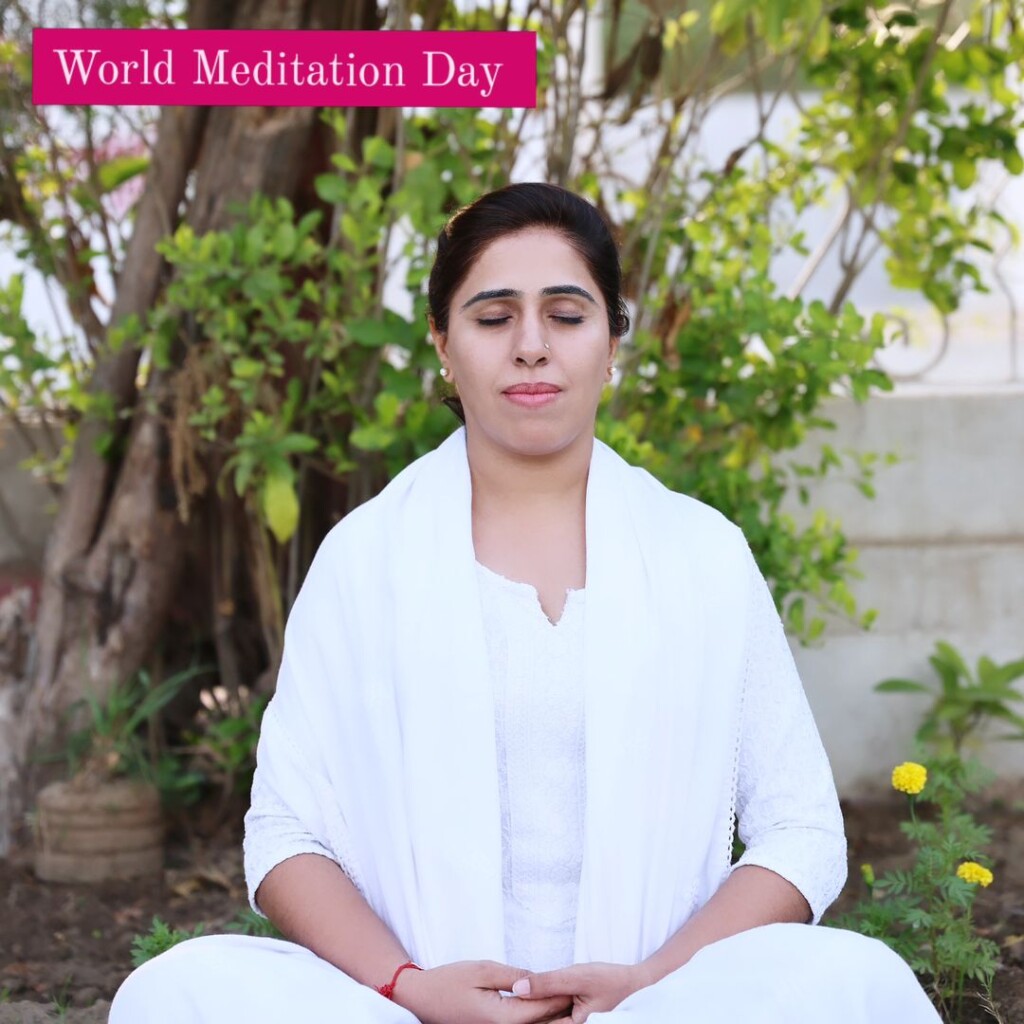Meditation is one of the oldest practices that has a positive impact on the state of mind and the emotional state of a person. Since people are using meditation to solve the problem of inner stress, it is useful to know what types of meditation exist and which one is right for you. Every type is different, and while some of those may be based on mindfulness, others may teach better concentration or personal spiritual development.
In this article, you will find out the most common types of meditation that can help you to become a more relaxed and focused person.

11 Types of Meditation
1. Mindfulness Meditation
Of the many forms of meditation, mindfulness meditation is arguably the most popular in contemporary society. This practice is based on the teachings of Buddhism and its aim is to be mindful and conscious of the present time. The purpose is to monitor the thoughts and feelings and not to pass any sort of judgment on them. Thus, you develop an appreciation of the fact that there is a need to develop an awareness that can assist in managing stress and anxiety.
This is particularly the case with mindfulness meditation where a major feature is directing your concentration to your breath. Every inhale and exhale can be considered as a control that helps you bring your mind back into focus whenever it wanders off. This technique is especially suitable for people who desire to cope with stress or enhance focus in their day-to-day activities.
To practice mindfulness meditation, select a calm environment, sit comfortably and then concentrate on your breath. If you have thoughts or feelings, just recognize them and let them go and return your attention to the breath.
2. Guided Meditation
In guided meditation, there is a narrator or a teacher who guides the participants through visualization or through a meditative process. This type of meditation is perfect for newbies because it is easy to follow and has some sort of direction. Sometimes, the narrator will help you to tense and relax muscles, pay attention to breathing, and visualize something pleasant or constructive.
Guided meditation can be performed in many forms, ranging from relaxation to healing or personal development forms. It can be done individually with the help of applications or with recordings or in a group with a live teacher. If you are a beginner or have problems with concentration, guided meditation will be useful for you at the beginning of your practice.
3. Loving-Kindness Meditation
Loving-kindness meditation is also called “Metta” meditation, in which the focus is made on spreading love and good vibes to oneself and others. This practice entails mumbling good wishes such as ‘May I be happy, may I be healthy, may I be peaceful’ and then expanding this to include friends, people one knows, people one may not like and so on.
Loving-kindness meditation is beneficial for developing compassion, empathy and strengthening emotional well-being. It is most helpful for those with low self-esteem or for anyone who wants to improve relations with other people. In the long run, it can create a better bond between an individual and the environment he or she exists in.
4. Transcendental Meditation
Transcendental Meditation or TM is one of the most popular forms of meditation where you silently repeat a mantra, which is assigned to you by a TM teacher. While there are other practices of meditation that involve concentration on the breath or awareness of the body, in TM one is supposed to go beyond ordinary thinking.
Transcendental Meditation is done for twenty minutes twice in a day with closed eyes. That is why it is easy to learn and apply in everyday life and it has a significant impact on people’s lives. TM is known to enhance creative thinking, inner relaxation and decrease stress levels. It has been found that it can reduce cholesterol levels, and blood pressure and improve the mental and physical health of a person.
5. Zen Meditation
Zazen or Zen meditation is an exercise originating from the Zen Buddhist tradition. It consists of a sitting position whereby the practitioner concentrates on his/her breathing as well as position of the body. The concept is to learn how to watch the thoughts without engaging or reacting to them.
In contrast to many other forms of meditation, Zen meditation may be quite rigorous. Many practitioners spend most of their time in definite postures without changing their positions frequently. The main focus is on consciousness of the current reality and the lack of distractions. One of the best-known forms of meditation is Zen meditation, which is very popular in Buddhist temples and can only be achieved with commitment, but it can bring the practitioner to great revelations and spiritual enlightenment.
6. Body Scan Meditation
Progressive relaxation is a technique in which the individual mentally surveys the body from head to toe as he focuses on the sensations in different parts of the body. The aim is to be mindful of feelings and parts of the body that are tense, focusing on each part without trying to alter it.
This kind of meditation is especially beneficial for combating stress and encouraging rest. It is usually applied in mindfulness-based stress reduction programs and can be done while one is lying down or sitting down on a chair. The process of performing the check-in with your body assists in building a stronger bond with one’s body and learning about its correlation with mental health.
7. Yoga Meditation
Yoga is not only a physical activity but also contains the features of meditation in all its poses, or asanas. Yoga meditation includes the coordination of breath with movement and directing the attention to the present time. In this way, the body and the mind are synchronized and you become balanced, flexible, and at ease.
Yoga is also beneficial for the body and besides that practicing yoga meditation can be useful for the over-excited mind as well. Yoga is often practiced together with other forms of meditation such as mindfulness or mantra for the purpose of improving the result.
8. Mantra Meditation
Mantra meditation is a technique that is used to bring the mind to a focal point; this is done by the use of a word, phrase or sound. Like Transcendental Meditation, the sound in mantra meditation is used as an object to guide you to a different level of consciousness. Some of the phrases used by participants include “Om,” or positive affirmations such as, “I am peaceful. ”
The sound vibrations are believed to exert a certain influence on the nervous systems in the body, which would in turn help in relaxation. Thus, you can stay in meditation and not let your thoughts go astray by paying attention to the mantra.
9. Chakra Meditation
Yoga meditation is aimed at the distribution of energy in the human body, which is distributed through the seven main centers. In yogic literature, there are seven major chakras, and each chakra is associated with certain aspects of bodily, mental, and spiritual functioning.
In the practices of chakra meditation, the participant concentrates on one or several of these chakras, which are pictured as circles of light. The purpose is to remove the energy disturbances and bring the energy currents in the body to a state of health and wholeness.
10. Vipassana Meditation
Vipassana is one of the oldest forms of meditation which has been practiced since the time of the Buddha. The term “Vipassana” is translated as “insight” or “clear seeing. ” This type of meditation focuses on the concentration on the physical sensations and thoughts to get the understanding of reality.
Vipassana meditation is done in silence and it is most common to practice Vipassana for several days at a time. They need to pay attention to the inner process in a balanced manner and free from self-constructed mental modes, which will lead to the development of insight and compassion.
11. Sound Meditation
Sound meditation involves the use of sound like gong, singing bowls or chanting to help in achieving the meditative state. The sounds serve as a point of focus for your concentration to help you let go of your thoughts and be at ease.
A vibrational sound bath is especially helpful for people who experience difficulties with concentration during the silence. The tones and rhythms of the sound are considered to have the ability to heal and balance emotions by regulating the working of the nervous system and stress levels.
Conclusion
Meditation is a very private experience, and there is no single way that it can be done. While Zen meditation may attract an individual with an interest in focused stillness, sound meditation may attract another individual with an interest in healing vibrations, but all forms of meditation offer many avenues to achieving inner peace. Through learning these techniques, you will be able to find out which of the practices suits you and start a process of reaching a new level of mental and spiritual enlightenment.




